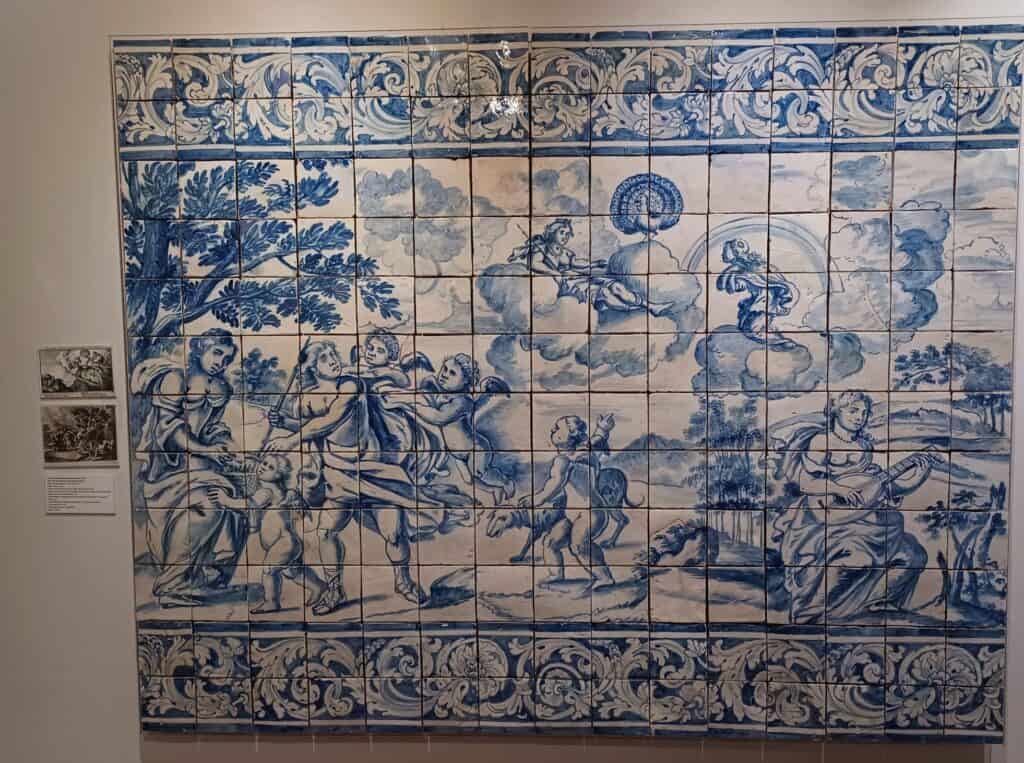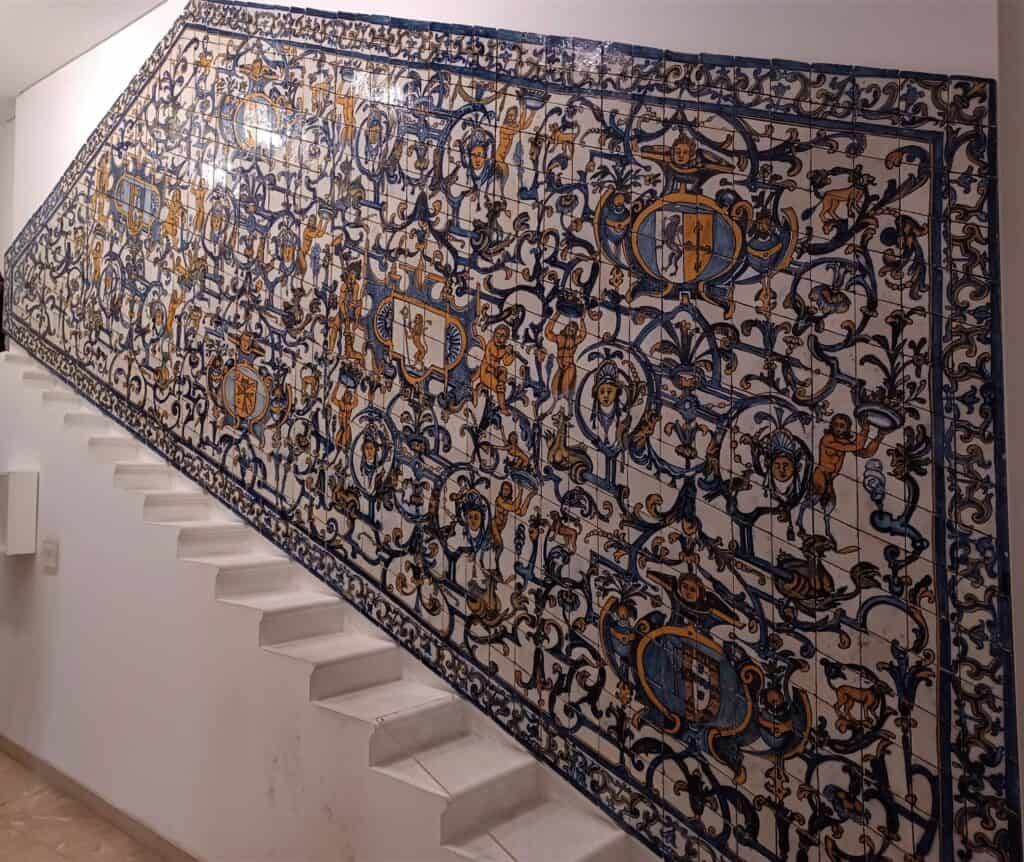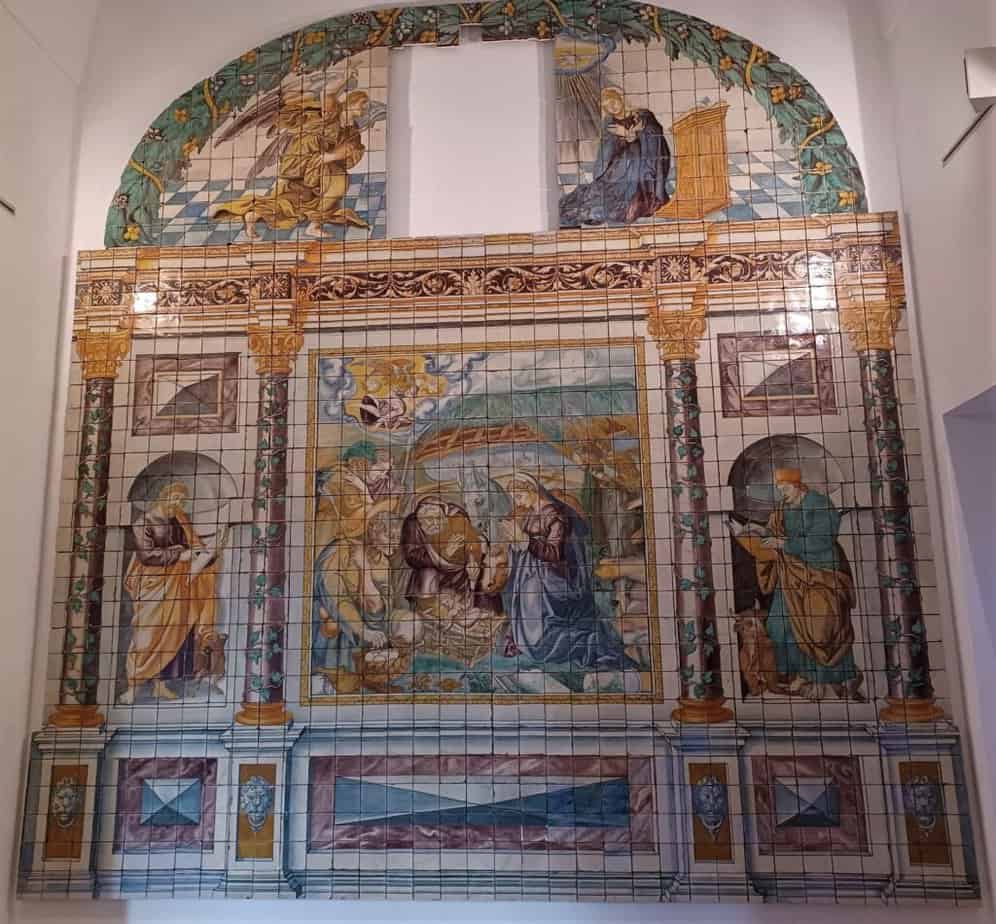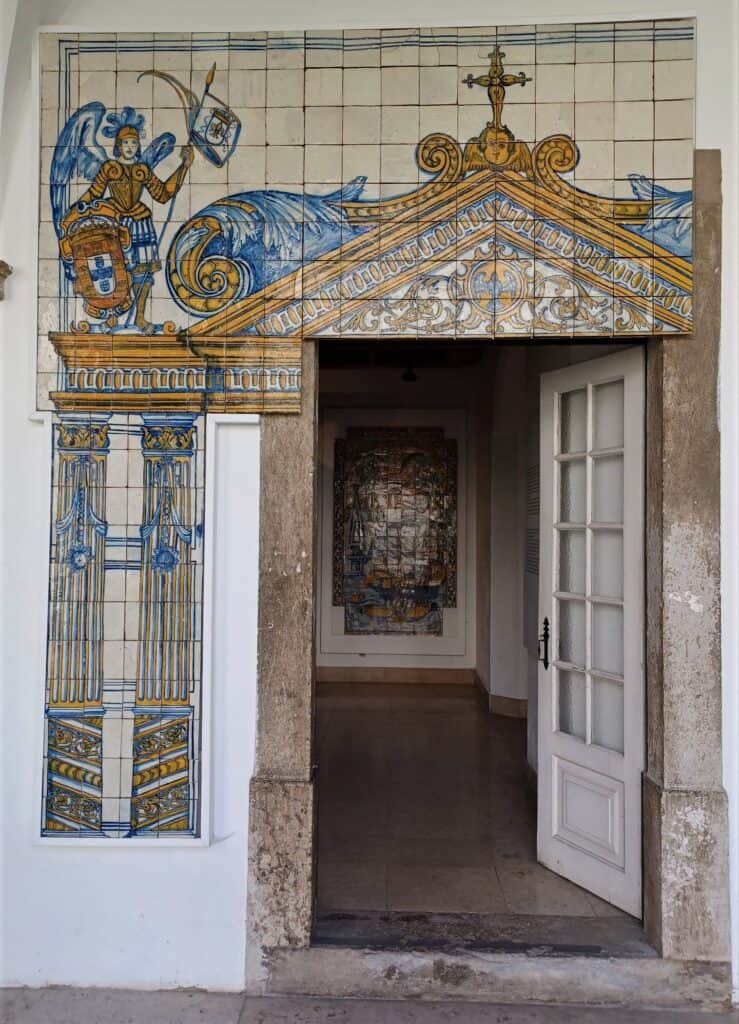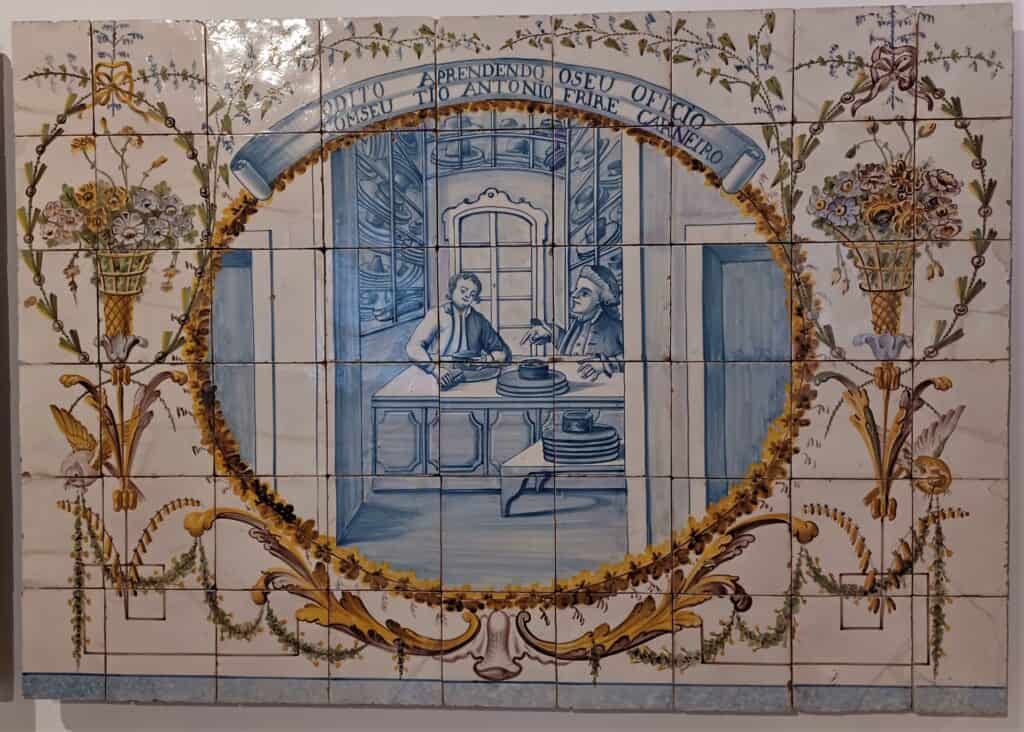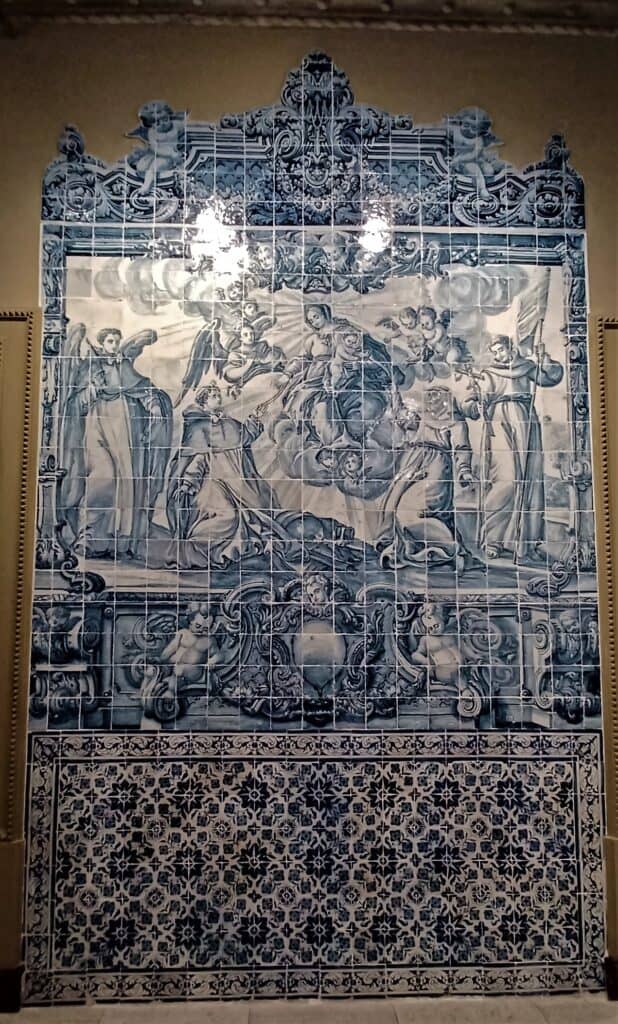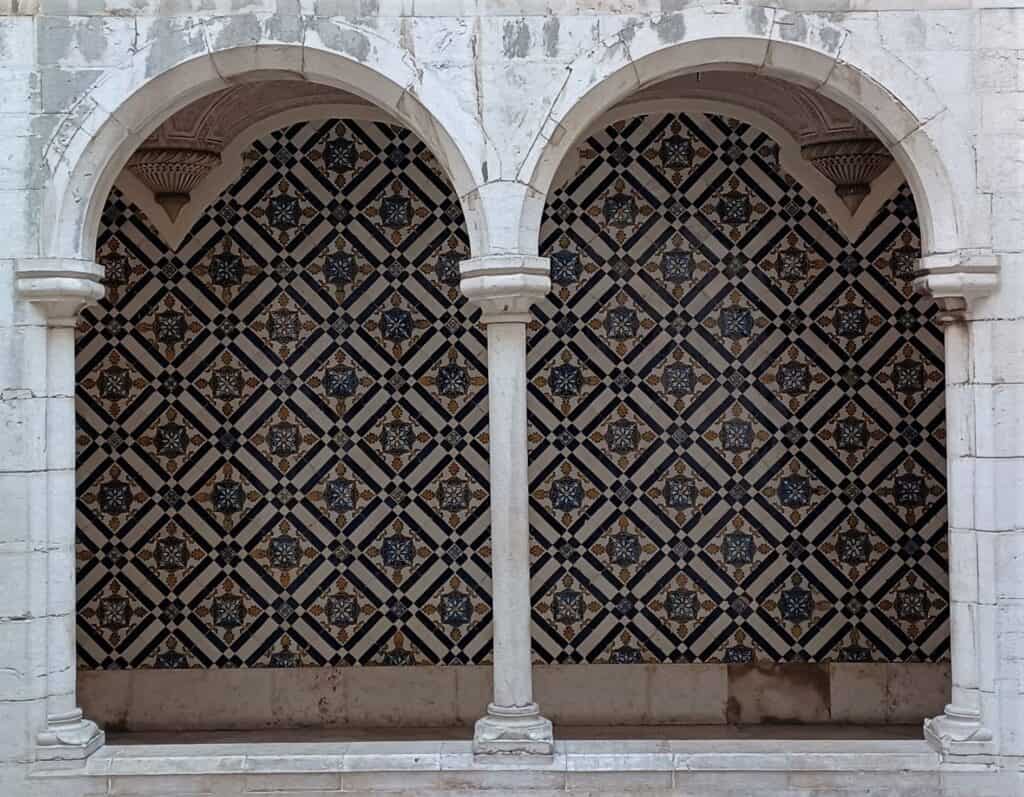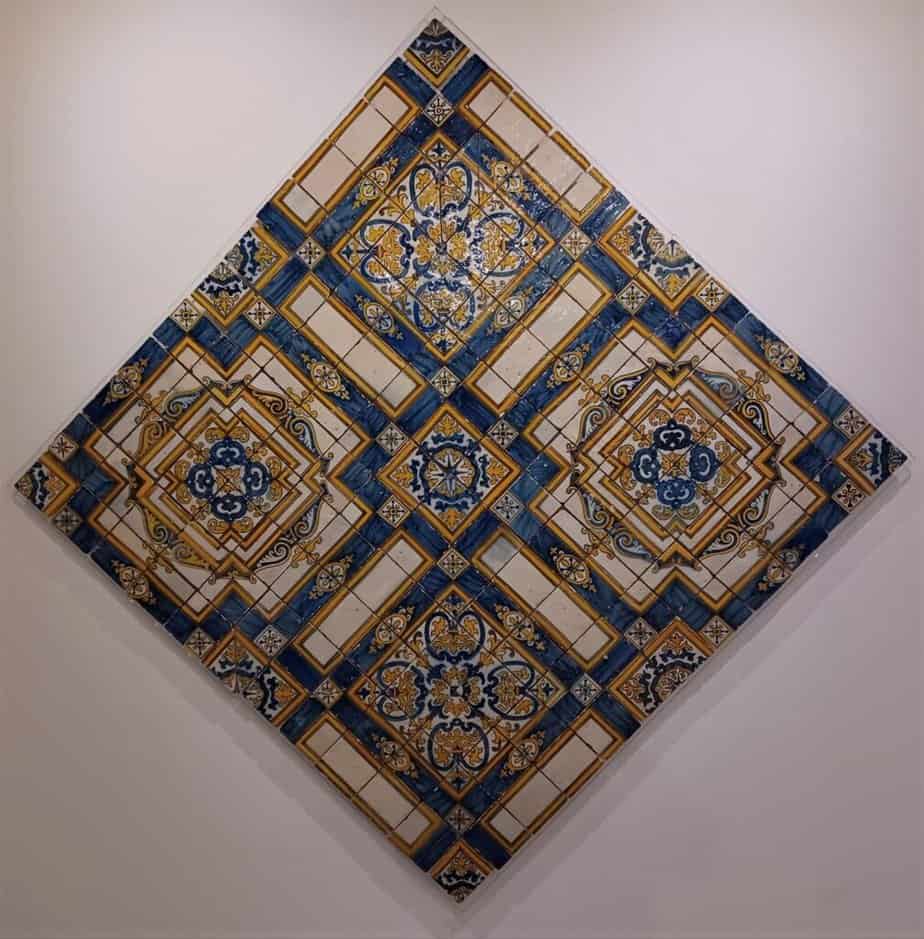Outside the tourist areas is an incredible museum in a 16th century convent that most visitors to Lisbon miss.
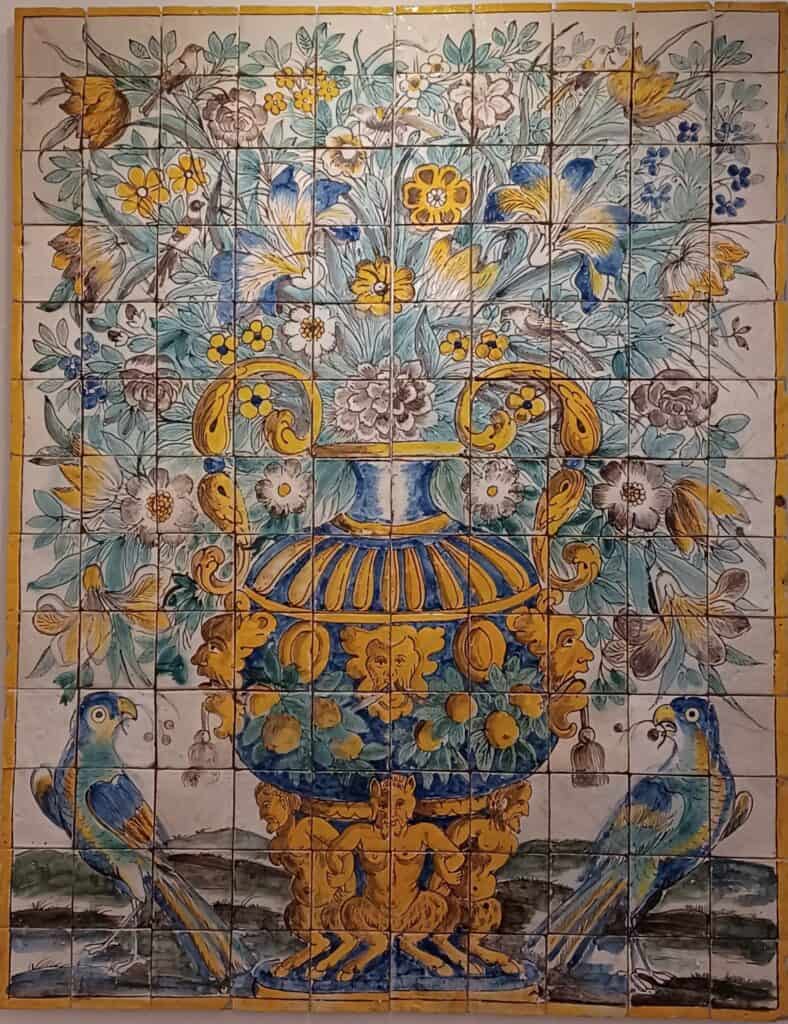
Azulejo Tiles
The word Azulejo comes from the Arabic word Zellij and means “polished stone.” This style of decorative painted tiles, first in Spain and later in Portugal, were meant to emulate the colorful mosaics of the Roman and Byzantine Empires.
Legend has it that King Manuel I of Portugal visited Seville, Spain in 1503 and was so taken by the fanciful tiles that he wanted to decorate the new Pena Palace in Sintra, Portugal with similar designs.
At first, Azulejos were imported from Spain, but soon, Portugal began producing tiles in the many workshops that sprung up. By the late 18th century, Portugal’s artists were cranking out spectacular Azulejo pieces at an unprecedented rate, due in no small part to the demand from the Portuguese colony of Brazil.
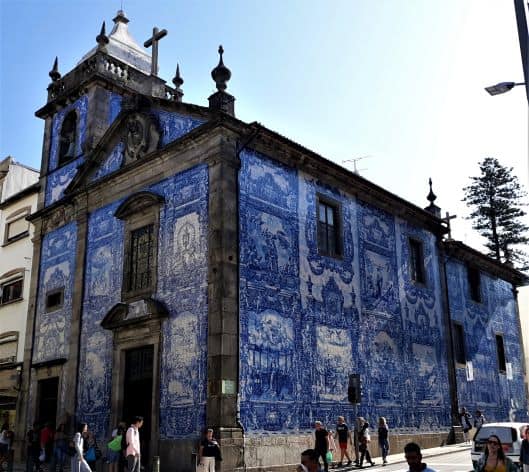
In the 19th century, industrialization took over and tiles were mass produced in factories. These are the tiles you will likely see decorating apartment buildings in Lisbon and Porto. In the 20th century, Azulejos fell out of favor and many beautiful installations were destroyed.
Then, when Lisbon built its underground metro system in the 1950s, something wonderful happened. Artists decorated the stations with Azulejos and suddenly the tiles became popular once again.
Museu Nacional do Azulejo (National Tile Museum)
The Convento de Madre de Deus (Mother of God Convent) was founded in 1509. The convent was restored several times before being partially destroyed in the 1755 Lisbon Earthquake. Religious orders were closed in Portugal in 1834 with the intent to nationalize the property to benefit the people of Portugal (this decree had mixed results, at best). The Convento de Madre de Deus wasn’t closed until 1868 and the plan was to it into a museum. However, that didn’t happen until 1957 when construction began and the National Tile Museum finally opened in 1965.
The museum itself has dozens of exhibits, showing off one of the largest collections of ceramics in the world. Most of the exhibit rooms feature tiles and murals from a specific time period starting with examples from the 15th century to the present. Some of my personal favorites are the blue and white murals from the 17th century in the early Baroque period. Magnificent.
Behind the cloister (courtyard) there are several rooms that you can’t visit but can see through the glass. They house a massive library of tiles in crates piled to the ceiling. Like I said, you can’t visit these rooms, but it looks like they’re in the process of tagging and categorizing this enormous collection.
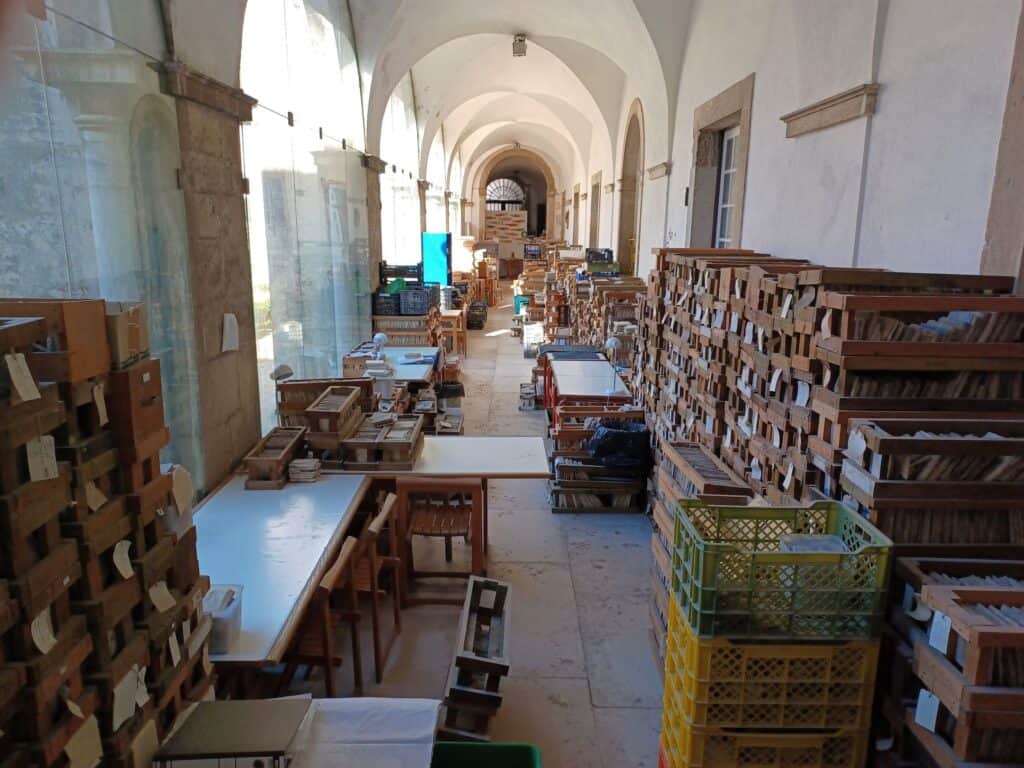
After seeing several rooms of incredibly colorful and intricate tile designs, you’ll make your way to the church chapel. With so much blue and white (as well as other colors) tile, it’s quite a shock to see the gold and mahogany of the chapel. Paintings ring the sanctuary and there’s some amazing artwork on the ceiling, too.
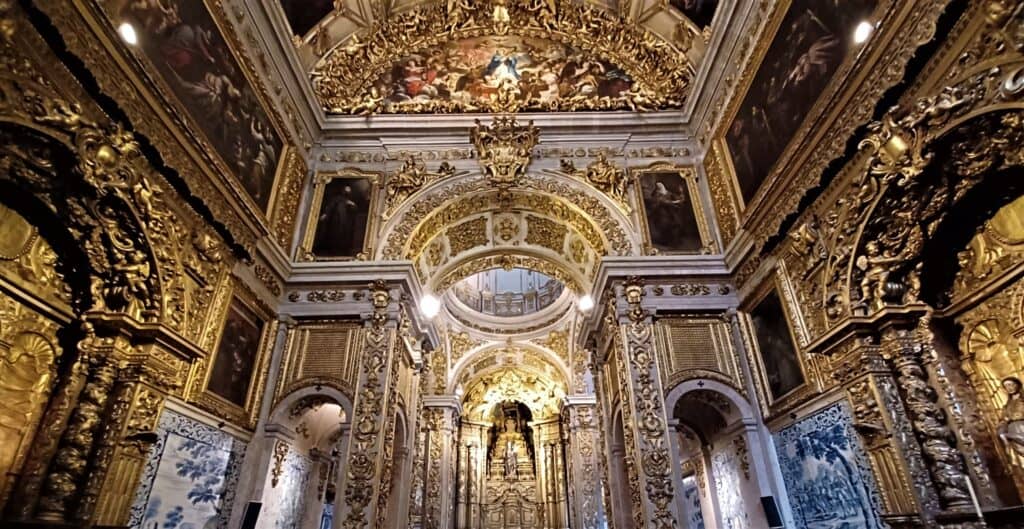
The best is saved for last. On the top floor (Room G) is the expansive Great Panorama of Lisbon tile mural. by Gabriel Del Barco. Del Barco was born in Spain but moved to Lisbon in 1668 when he was 20. Around 1700, he created Great Panorama of Lisbon, a depiction in painted tile of the skyline of Lisbon. The piece stretches over an entire wall of the room, at least 60 feet.
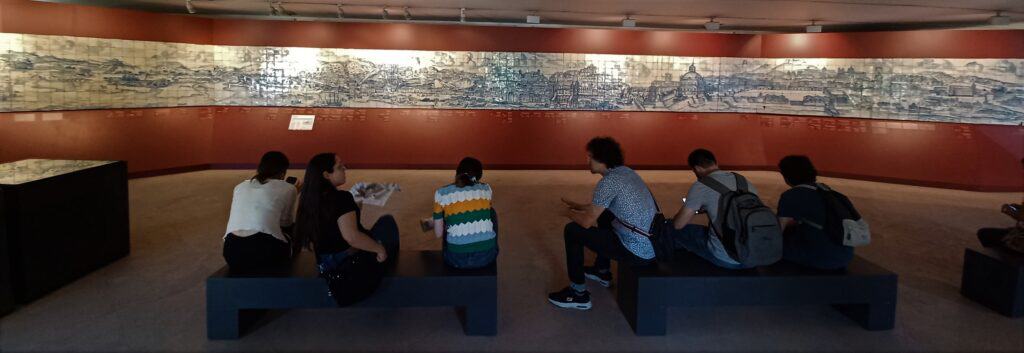
The work is labeled with the most important structures in Lisbon. You’ll probably recognize a few buildings like the Jerónimos Monastery and the Lisbon Cathedral. But, because this project was completed around 1700, many of the places depicted were destroyed in the 1755 Lisbon Earthquake. Don’t miss it!
How to get to the Museum
The Museu Nacional do Azulejo is outside the city tourist areas of Lisbon which is why most visitors never make it there. But, it’s easy enough to get to (map). It’s about a 15-20 minute Rideshare trip from most of Lisbon’s central districts. Or, take the bus. Many buses stop right in front of the museum. Get off at the Av. Inf. D. Henrique (Ponte Xa) stop. As of this writing the 759, 728, and the 794 all stop in front of the museum. The 742 stops at Ponte Xabregas, about a 2 minute walk away. Remember, bus schedules and routes can change. Double check before leaving.
About the Author

Brent Petersen is the Editor-in-Chief of Destination Eat Drink. He currently resides in Setubal, Portugal. Brent has written the novel “Truffle Hunt” (Eckhartz Press) and the short story collection “That Bird.” He’s also written dozens of foodie travel guides to cities around the world on Destination Eat Drink, including in-depth eating and drinking guides to Lisbon, Porto, Sintra, Monsaraz, and Evora in Portugal. Brent’s podcast, also called Destination Eat Drink, is available on all major podcasting platforms and is distributed by the Radio Misfits Podcast Network.

